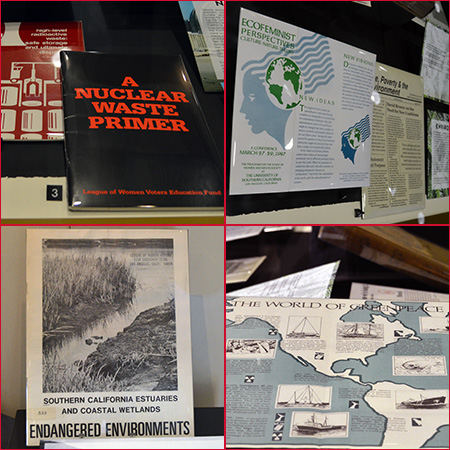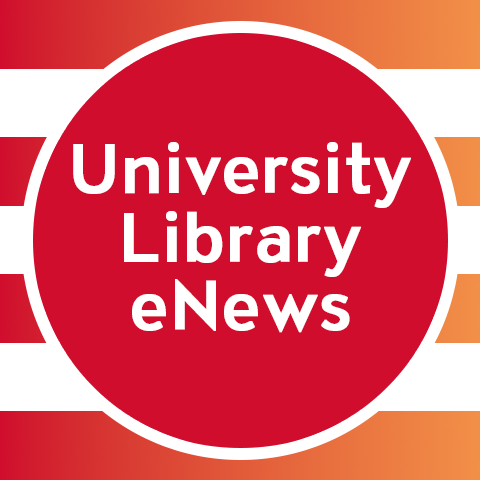Newsletter Edition: Fall 2019
Contributed by Elizabeth Altman
The yearlong exhibition launched this past July, Right of Way: Justice and Equity in the Growth of Los Angeles, demonstrates the crucial role the preservation of documents of private citizens, community groups, government projects and political campaigns plays in how we remember our history. The items selected for the exhibit depict environmental justice as a dimension of the history of the Los Angeles area from the early to late 20th century, both the deleterious conditions that demanded action and the efforts to rectify them.

The environmental justice movement, as stated in the introduction to Right of Way, sees “marginalized groups as being disproportionately burdened by the presence and effects of ecologically harmful infrastructures.” Due to inequities in our political systems, such harmful infrastructures can and do arise through the siting of housing, city zoning laws, permitting of heavy industry, designation of public space, parks and schools, and regulation of water and air.
The Library held a reception to celebrate the exhibit’s opening on October 16th, featuring a lecture by Los Angeles City Council candidate and CSUN faculty member Loraine Lundquist. Lundquist spoke about the potential for expanded public transportation and increased high-density housing to improve air quality problems in the San Fernando Valley.
Special Collections Head Ellen Jarosz, one of the exhibit’s curators, views the library’s exhibits as learning opportunities. “One of the things we’re always trying to do is help people reflect on currently relevant issues in an historical context. We show them how documents and ephemera can be relevant for the discussion of a topic, and let them draw their own conclusions. For this exhibition we are hoping visitors will leave pondering the distinctions between justice and equity, among other things.”
Jarosz admits that basing an exhibition on an issue like environmental justice in itself makes a political statement. Special Collections & Archives Coordinator Holli Teltoe, another curator, agrees: “We felt passionate about the subject. We wanted it to speak to the communities that have been marginalized and neglected by industry and society and political forces - people who have to fight for power and agency. We wanted to draw students who were passionate about this because these issues will affect them in the future. Environmental justice is as much a human as an academic issue.”
The case cards in the exhibit distinguish environmental justice from environmentalism and conservation, the latter two of which focus on defending and preserving natural spaces and resources for their own sake, rather than for the health of human beings. The arrangement of the exhibit covers a wide range of topics: Housing, Noise and Air Quality, Parks, City Planning, Nuclear Waste, Hazardous Waste, Zoning, Conservation, Open Space, Public Spaces, Coast, Climate Change, Urban Infrastructure, and Water, using items drawn from the Susan B. Nelson Collection, Juana Beatriz Gutiérrez Mothers of East Los Angeles (MELA) Collection, League of Women Voters of Los Angeles Collection, Northridge Civic Association Papers and the Dorothy Boberg Collection, among others.
Right of Way: Justice and Equity in the Growth of Los Angeles is viewable now through July 2020. Please try our audio tour during your visit.
